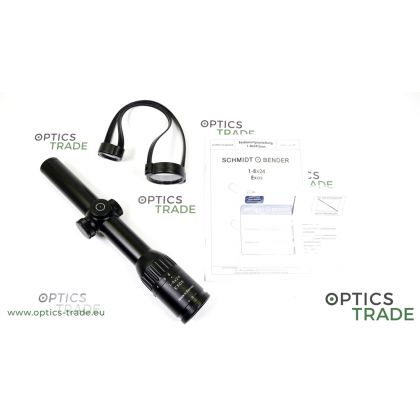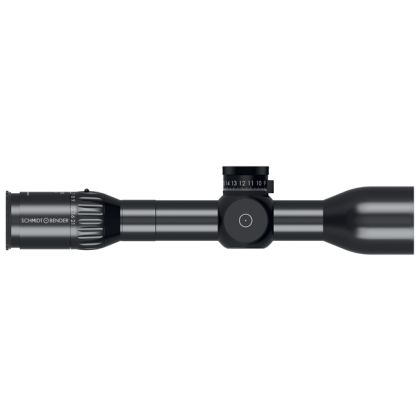Mounts
Rifle scopes with S&B Convex mounting rail
Sub Categories
Introduction
Schmidt & Bender, well reputed German manufacturer of sports optics, chose the same direction as other premium European manufacturers and invented their own rail standard for rifle scopes with integrated mounting rails. The most recent rail mounting from this producer is called "Convex rail" and it is also known by the name "S&B rail". Mounting rail is placed underneath the scope and is integrated as part of the scope, same as with other rails from other manufacturers. These mounts cannot be removed, thus mounting with integrated rails is the only option with these scopes.
The solution has been here for years, decades to be honest. It was developed roughly at the same time as ZM/VM rail from Zeiss. However, it did not gain popularity like Zeiss or Swarovski rail and it is used only by Schmidt & Bender.
Properties of Convex Rail Standard
The mounting rail system from S&B uses matching slide-in mount fasteners which connect the rifle scope to the gun.
What is interesting with Convex rails is the fact that these solution offers the possibility to tilt the scope up to 1° angle to the left or right. This is not like with the similar rail standards and Schmidt & Bender is quite unique with this option.
It is possible to recognize Schmidt & Bender rifle scopes that uses their rail standard by the name – the models with integrated rails have LMC acronym in their name and this is in common with all their railed scopes.
Pros
Mounting, removing or changing the scope on your rifle is much easier when using a rail. There are also no mounting marks left on the scope tube when removing it. If there is no stress applied to your scope tube, because there is no mounting rings used, this also means that no harm can be done to your rifle scope (which eventually gives a mounting rail a major advantage).
Personally, I usually find hard achieving the perfect horizontal alignment when mounting a rifle scope with mounting rings. There are no similar issues when using rails. You just slide the rail on, tight the screws and voila – your rifle scope level should be perfect. After hundreds or thousands of round through the barrel, rifle scope might slide backwards when mounting rings are used. This cannot happen while using Convex rail or any other mounting rail. Definitely, the stability, robustness and reliability are improved with railed scopes. During the mounting process, correct eye relief is much easier to achieve with railed systems; the scope can easily slide forwards or backwards to the point where you are satisfied with an eye relief position. When this goal is accomplished, you will only have to tighten the screws in the rail and that’s it. Simple as that.
Cons
As with all of the rail mounting systems, in some occasions the setup can appear a little high. For those who are sensitive about the scope height, check your configuration and heights before buying such rifle scope.
Precision made rails on scopes add some costs to the production which means that railed scopes are usually more expensive solution, compared to mounting rings. Last, but not the least – with Schmidt & Bender railed scopes there might be some troubles to get a perfect setup, because not many mounts manufacturers make mount solutions for these scopes. Availiability of mounting systems for Schmidt & Bender rifle scopes with Convex rails is not that well represented on the global market.
Conclusion
Schmidt & Bender Convex rail is probably the least popular modern rail standard available. It has very good technical properties, nevertheless. If you can found a decent mounting system for S&B Convex rail, look no further. You should be pleased with Convex rail solution, because it is a quality system and will perform well.
Finally, Convex rail mounting system will always achieve better results than a conventional mount with mounting rings. Therefore, you should always choose a rail system if you have that possibility available.
Filters
Sort
Filters
Sort





